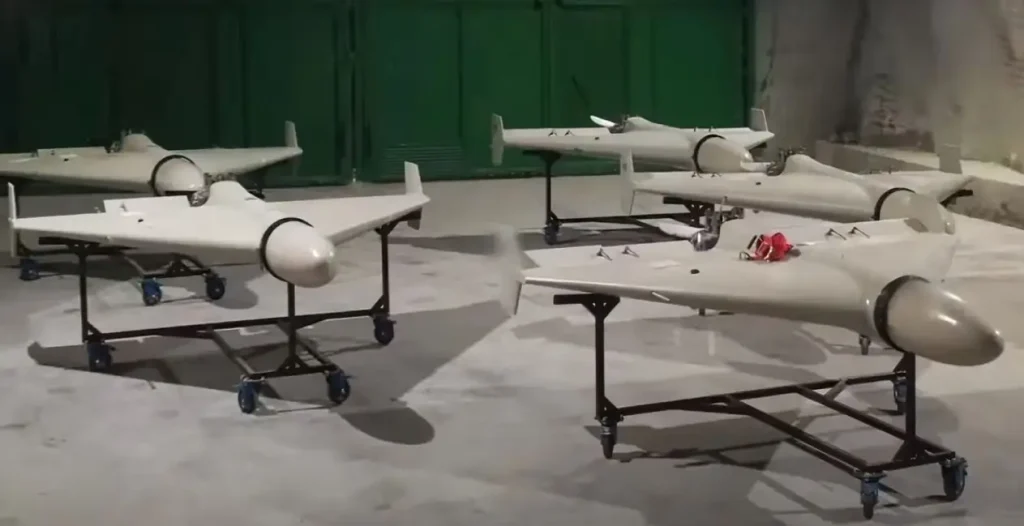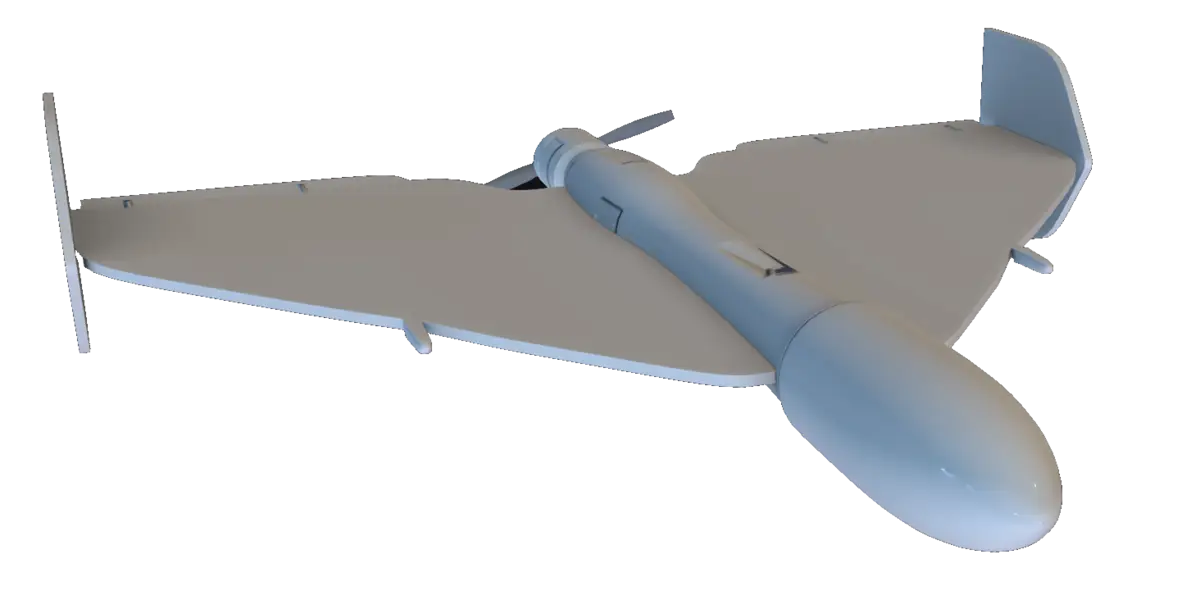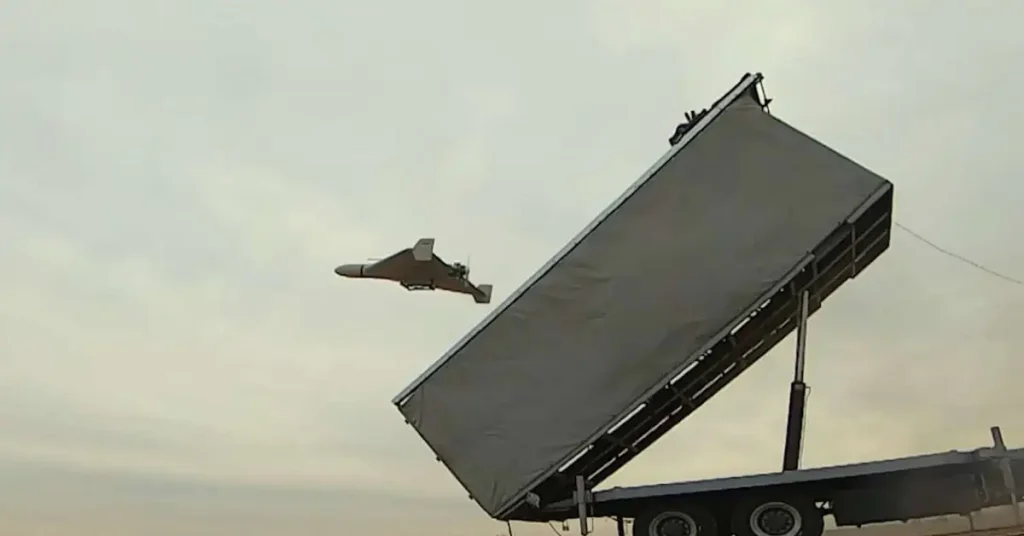Explore the Shahed-136 kamikaze drone: its specifications, cost estimates, variants, and how it’s used in modern conflicts.
The Shahed-136 (also known in Russian service as Geran-2) is an Iranian-designed kamikaze drone or loitering munition that has attracted global attention due to its deployment in conflicts such as Ukraine.
This article lays out clear specs, price estimates, variants, and operational details, to give readers a grounded, up-to-date understanding as of early 2025.
Section 1: Design, Capabilities, and Variants

Basic Design and Flight Characteristics
The Shahed-136 uses a delta-wing layout with stabilizing vertical rudders at each wing tip. The fuselage blends into the wing base, and the engine is mounted in the rear, driving a two-bladed propeller in a “pusher” configuration. A small rocket-assisted takeoff (RATO) booster is used during launch phases in many deployments.
Length measures about 3.5 metres; wingspan is around 2.5 metres. Weight is roughly 200 kg including warhead, fuel, and structure. Cruising speed is approximately 185 km/h. Altitude during flight can vary widely, typically from low levels up to several thousand metres depending on mission profile.
Warhead, Guidance, and Variants
Warhead payload is generally in the 30–50 kg range of high-explosive fragmentation types. Some newer versions have reported heavier warheads (around 90 kg) particularly for attacks on infrastructure.
Guidance combines an inertial navigation system (INS) and GNSS (e.g. GPS / GLONASS). Some versions incorporate optics or sensors for terminal guidance or to refine targeting. Variants exist intended for anti-armor, anti-fortification, or radar-seeker roles.
Operational Range, Launch, and Usage Modes
Range estimates vary between ~1,000 km and 2,500 km depending on fuel load, warhead size, and mission type. In many cases, the flight path is pre-programmed using GPS/GNSS, though some variants may receive updates or corrections mid-flight.
Launch methods: often from ground-based mobile racks, sometimes mounted on trucks; sometimes in salvo to overwhelm air defenses. A RATO booster is used initially; once airborne, the main propeller engine takes over.
Section 2: Price, Manufacturing, and Cost Dynamics
Estimated Cost Per Unit
Price estimates vary depending on source, variant, and production location. A common range cited in 2023-2025 sources is **US$20,000 to US$50,000** per unit for basic models.
Some leaked figures suggest Russia paid Iran close to US$190,000 per unit for large batches in 2022, with lower projected costs (~US$50,000) when more components are produced domestically.
Factors Influencing Cost
- Warhead size: Larger warheads raise cost due to more explosive material and reinforced airframe.
- Guidance and sensors: Addition of optics, terminal seekers, or upgraded GNSS/INS components increases price.
- Production scale and localization: Domestic manufacture tends to reduce per-unit cost, while reliance on external supply chains increases it.
- Launch and auxiliary equipment: RATO boosters, launcher racks, and logistics factor into overall program cost.
Section 3: How Shahed-136 Is Used in Conflicts & Challenges It Poses
Deployment and Combat Use
The Shahed-136 has seen extensive use by Russia (as Geran-2) in the war in Ukraine, often used in waves to overwhelm air defences. It has also been deployed by Iran and aligned groups in other conflicts.
Targets often include infrastructure, power stations, and other fixed installations. Moscow uses them both to force the defense to expend expensive interceptors and to create psychological and logistical strain.

Strengths and Weaknesses
Strengths:
- Relatively low cost compared to many missile systems.
- Design simplicity makes mass production possible.
- Use of swarming tactics can overwhelm air defences by sheer numbers.
Weaknesses:
- Modest speed (~185 km/h) means air defenses or even small arms can engage them.
- Noisy and visually detectable at close range; stealth features are limited.
- Navigation systems can be jammed or misled.
- Loss rates are high in many deployments.
Real-World Impacts and Recent Trends (2025)
By 2025, the pace of Shahed-136 attacks has increased, often in large waves. Russian domestic production has ramped up, with localization of components including electronics and airframe parts.
Losses remain high, but cost asymmetry works in favor of the users: defenders must use much more expensive systems to neutralize them. Recent U.S. projects even include replica drones for training and testing defenses.
Section 4: Practical Tips for Analyzing or Tracking Loitering Munitions
- Use imagery analysis: Satellite photos and wreckage can reveal variant differences.
- Cross-check estimates: Ranges and warhead weights vary; consensus gives better accuracy.
- Follow supply chain reports: Shifts in electronics or engine sourcing affect cost and availability.
- Watch for upgrades: Newer warheads, sensors, or launch tactics can change performance and cost.
Kamikaze Drone in a Nutshel
The Shahed-136 loitering munition represents a blend of simple engineering, cost-controlled production, and tactical flexibility. Its specs—about 3.5 m in length, 2.5 m wingspan, 30-50 kg (up to ~90 kg) warhead, speed near 185 km/h, long range—make it a credible threat in modern conflict theaters. Price estimates vary, but most settle between **US$20,000–$60,000** per unit, with higher costs for upgraded features.
As conflicts in 2025 show, defending against Shahed-136 drones often costs far more than producing or launching them. Tracking their evolving capabilities remains crucial for defense planners and analysts of modern warfare.

